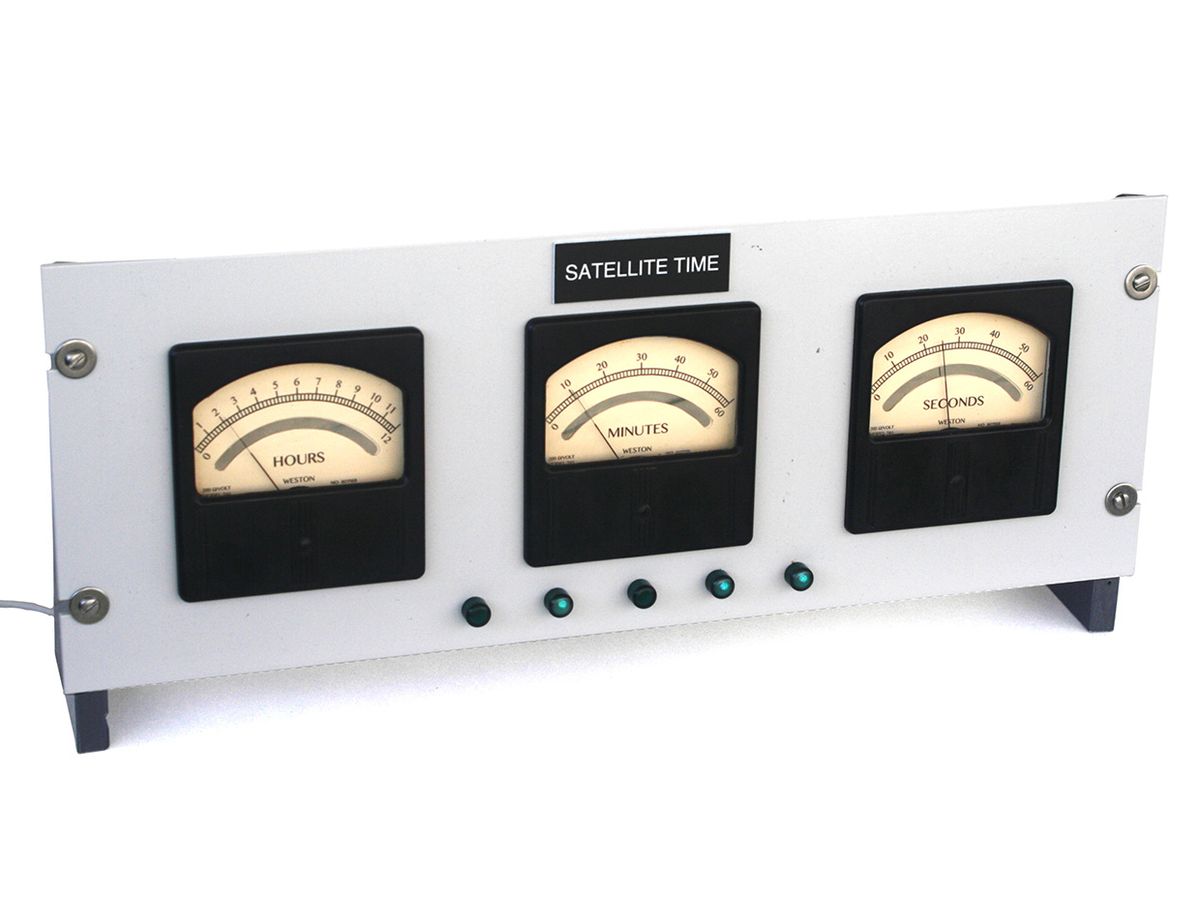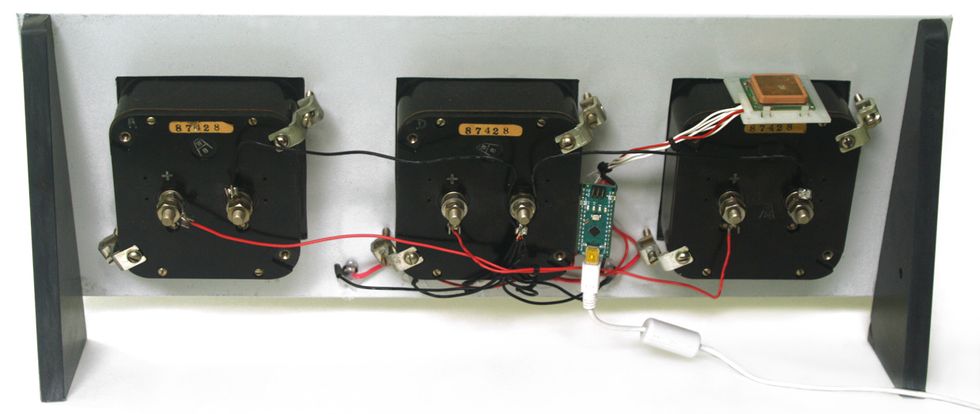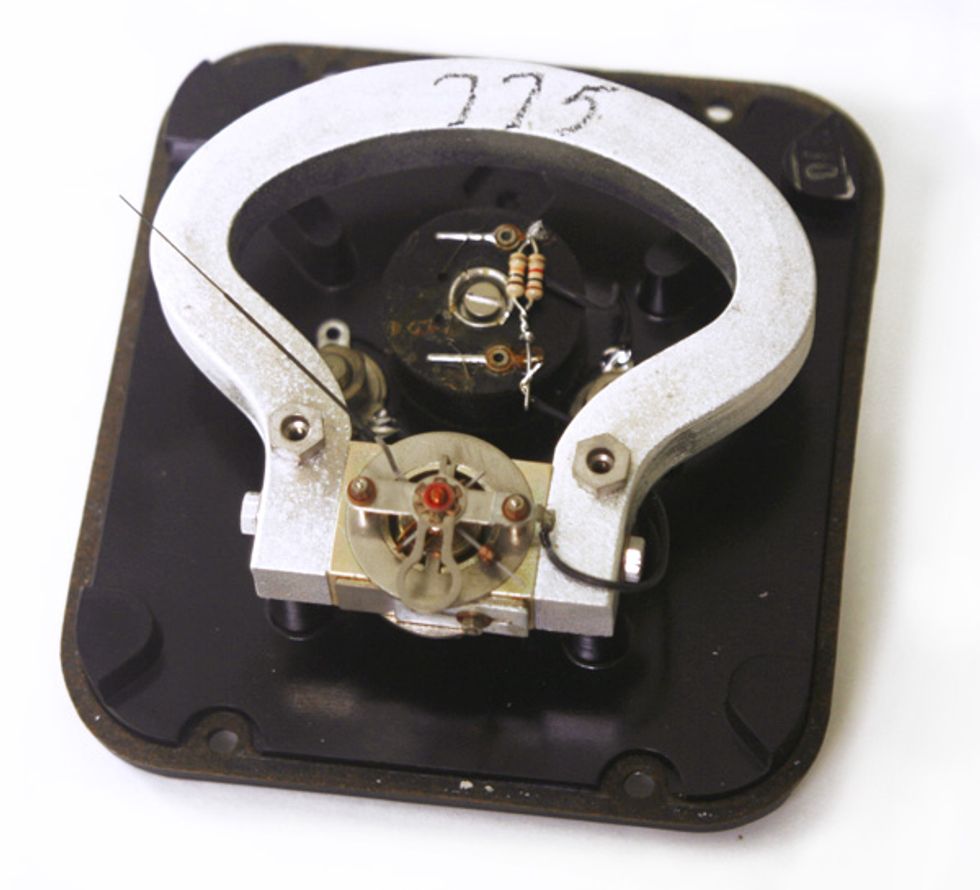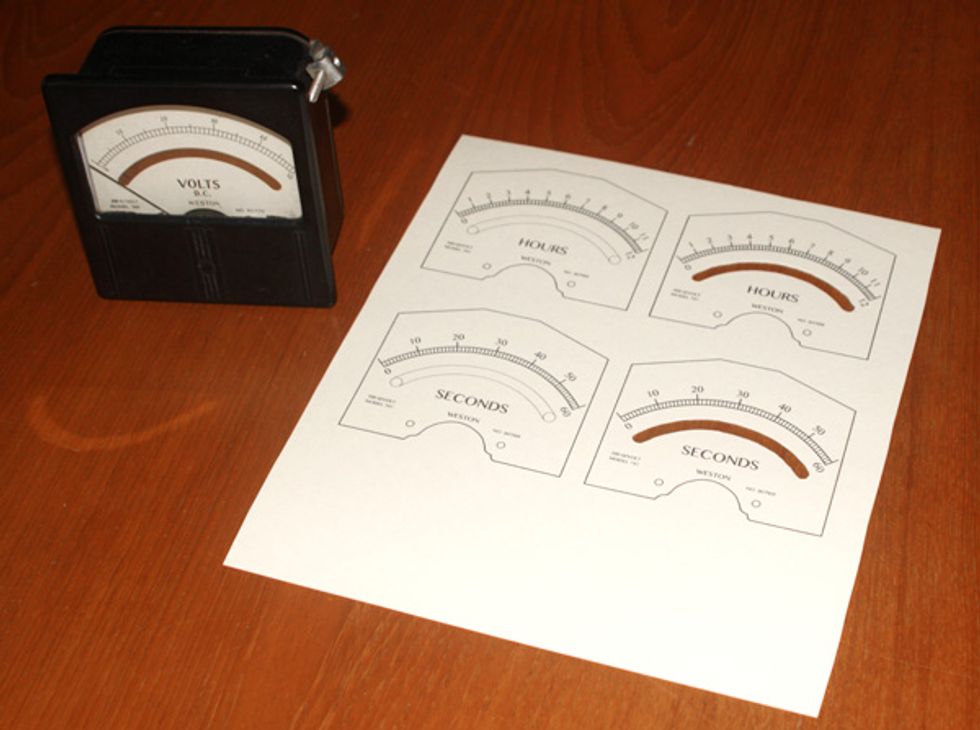Two years ago, on the 48th anniversary of the Apollo 11 landing, a cloth bag that Neil Armstrong used to return the first lunar samples to Earth was sold at a Sotheby’s auction for US $1.8 million. The seller had purchased it online two years earlier for a mere $995—a fantastically good deal for what turned out to be a precious artifact of the Apollo era.
While I wasn’t nearly so fortunate, I, too, got a good deal online for some hardware that probably contributed in some way to the Apollo program, though I don’t know how exactly. I obtained three vintage analog panel voltmeters for $15 each from an eBay seller who had bought them from NASA’s Marshall Space Flight Center, in Huntsville, Ala.
I could tell from their art deco–inspired faces that the three Weston voltage meters were old when I first saw them online, but I didn’t know how old. To my delight, I discovered manufacturing dates written on the back of the faceplates. These meters, it turns out, were made between May and December of 1955—and presumably shipped to Huntsville shortly afterward.
At the time, NASA did not yet exist. Huntsville was, however, home to an Army installation, known as Redstone Arsenal, where missiles were being developed. In 1955, Wernher von Braun and numerous other German rocket scientists were hard at work there building rockets as part of the United States’ ballistic missile program. This team would build the first U.S. satellite launcher, and later, after the site had become the Marshall Space Flight Center, von Braun and others in Huntsville helped to develop the giant Saturn boosters, which eventually sent the Apollo astronauts to the moon.
Having scored three classy panel meters of some vague historical significance (I can imagine von Braun having peered at their twitching needles), I wanted to do something fun with them. Inspired by a project I had seen on Hackaday, I decided to make a clock that would indicate the hours, minutes, and seconds by deflecting the needle on the analog voltmeters. But I would go a step further than the Hackaday project and combine the modern space age with the old. My clock would be synchronized with the atomic clocks carried on GPS satellites, while still looking like something that would be at home on a rack of instrumentation at some NASA facility during the Apollo program.
I had in my junk box a now-outdated GPS module [PDF], so I hooked that to an Arduino Nano, which I programmed to extract the time from the GPS signal. Then I opened up the meters and replaced the current-limiting resistors inside with ones of my own choosing so as to make the full-scale reading on each meter (originally 10 and 50 volts), to be somewhat less than 5 V. That allowed me to control the needle position on each meter using pulse-width modulation, which is easily output using certain dedicated pins on the Arduino.
The biggest challenge was to make it look like a period piece of equipment. For that, I first obtained a standard rack-mount “blanking” panel, one painted in a putty color, which contrasts nicely with the black Bakelite housings of the meters. I also purchased five vintage panel-lamp housings, into which I inserted LEDs for use as indicator lights.
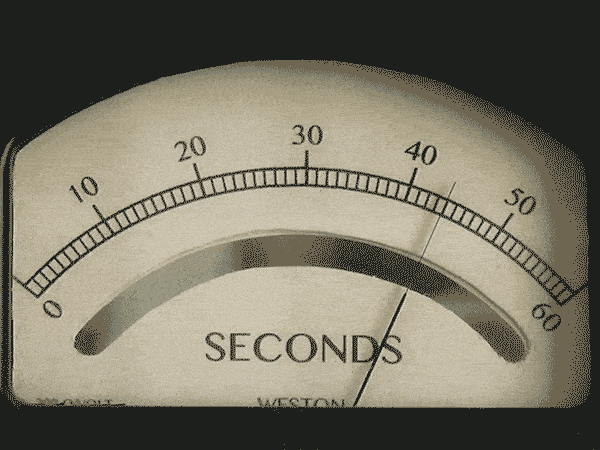
Next came the trickiest part: changing the faces of the meters so that they could indicate time. The first step in that process was to remove the faceplate from one meter and scan it. Using that as a template, I designed new faceplates with Adobe Illustrator, ones that show hours, minutes, and seconds yet preserve the style of the original faces. I printed the new faces on ivory-colored stock cut from a manila folder, which helped to give them a vintage appearance.
A fiddly bit was cutting out arc-shaped openings for the meters’ mirrors. Younger readers might not be aware that better analog meters, especially those used in volt-ohm meters (“VOMs,” the predecessor to today’s digital multimeters), included mirrors behind the faceplate, which helped you to judge whether you were viewing the needle square on. Without that, you could easily misread the indicated value because of parallax. My Marshall Space Flight Center meters included such mirrors, and I didn’t want to cover them with my new faces. An X-Acto knife worked passably well for this task, although if you look hard, you can see the flaws.
The final flourish was to affix a black plastic nameplate with the words “Satellite Time” in white lettering. That cost just a few dollars to have made and helps my clock look the part.
The three meters now show GPS time in my local time zone. The five panel lights indicate the number of GPS satellites in the sky. In theory, there can be as many as 16 overhead at any one time, so I display the number in binary using the five lights arrayed across the bottom of the clock.
Because my living room doesn’t include a rack for my rack-mount panel, I cut a couple of supports out of half-inch (1.27-centimeter) thick gray PVC, allowing the clock to stand upright on any horizontal surface. Power is supplied to the Arduino through a standard wall wart.
Despite its unconventional appearance, this panel-meter-based clock is easy enough to read. And with its ear to the GPS constellation, it always tells the correct time. More important, I get a chuckle looking at it, knowing that it’s built from components that probably contributed in some small way to putting astronauts on the moon a half century ago.
This article appears in the July 2019 print issue as “A Retro Timekeeper That Never Was.”
